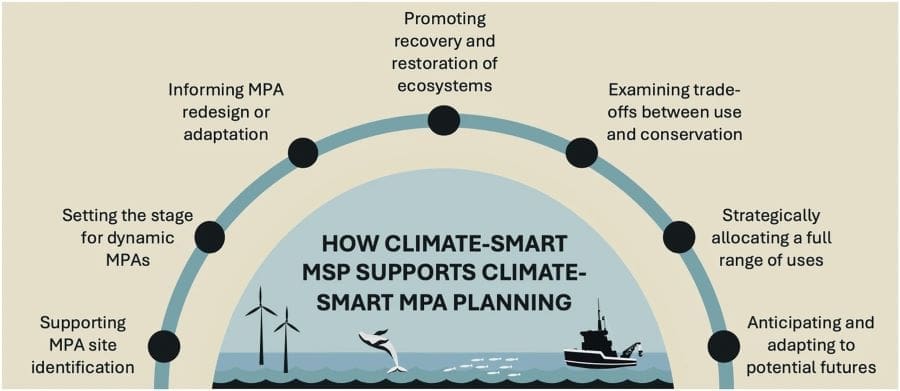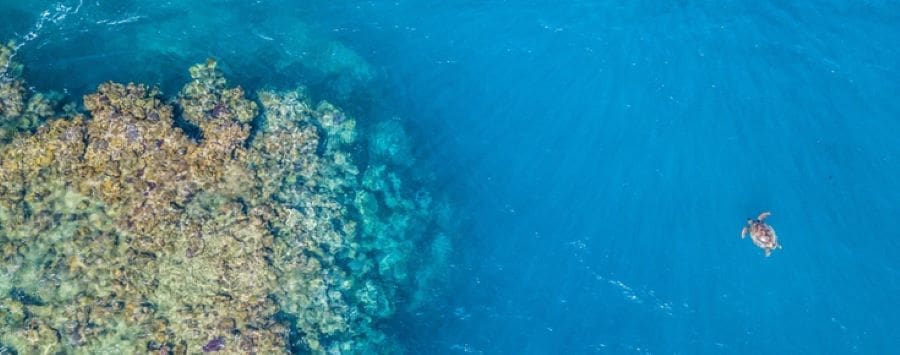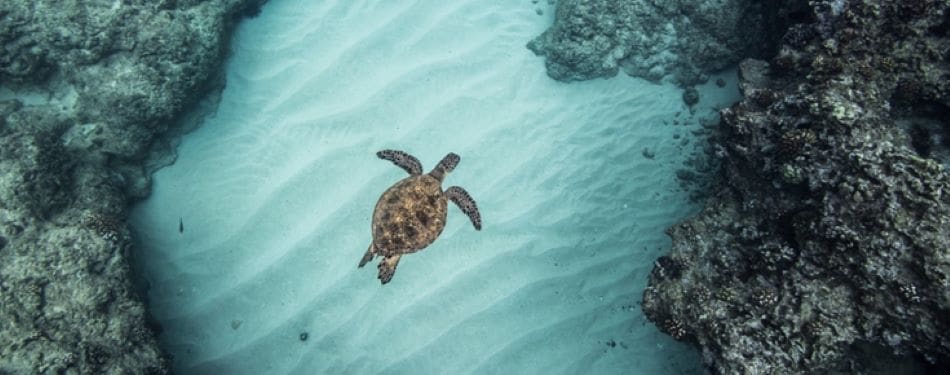Summary:
Marine spatial planning (MSP) and marine protected area (MPA) planning are often mistakenly treated as interchangeable, but a new study makes clear that this confusion risks undermining effective ocean management, especially in the face of climate change.
In an article published in npj Ocean Sustainability (Nature group), an international team led by Dr. Catarina Frazão Santos argues that while both MSP and MPA planning are essential, they serve distinct purposes, rely on different tools and skillsets, and result in different outcomes. Recognizing these differences, they say, is a prerequisite for crafting climate-smart strategies that can balance sustainable use with biodiversity conservation.
The study highlights five core distinctions — such as zonation, scale, and stakeholder involvement — and proposes seven pathways for integrating the two approaches more effectively. These include using MSP to support MPA site selection, redesign, and dynamic adaptation, while also informing trade-offs and promoting ecosystem restoration. The authors stress that MSP and MPA planning are not competing frameworks. Instead, they are complementary and mutually reinforcing when coordinated well.
“We must move from conflation to leveraging synergies to support a sustainable ocean effectively,” said Dr. Frazão Santos. The researchers call for clearer definitions and better integration to ensure marine management keeps pace with rapid environmental change.

Climate-smart ocean solutions require distinguishing marine spatial planning and marine conservation planning
In a paper published this week in npj Ocean Sustainability, researchers propose pathways to optimise synergies between marine spatial planning (MSP) and marine protected area (MPA) planning under a rapidly changing climate. The team highlights that both concepts serve different goals and result in different outcomes. This recognition is stressed as a prerequisite to dispel confusion and provide a clear pathway to climate-smart sustainable solutions.
Led by Dr. Catarina Frazão Santos, an invited assistant professor at the Faculty of Sciences of the University of Lisbon, affiliated member of the Marine and Environmental Sciences Centre at the University of Lisbon and honorary research associate at the University of Oxford, the team includes scientists and practitioners from Portugal (University of Lisbon and University of the Azores), United States (Sound Seas), Italy (National Research Council), Canada (Fisheries and Oceans Canada), and the United Kingdom (University of Oxford).
MSP and MPA planning are two area-based management processes used worldwide to support sustainable ocean use and conservation. While they share a variety of similarities, they target different goals and objectives, and use different methodologies, tools, and practitioner skillsets. Still, the concepts of MSP and MPA planning are often used interchangeably in multiple contexts, leading to confusion, conflict, and missed opportunities to support sustainable ocean solutions.
“Marine spatial planning and marine protected area planning are not the same. But both play a key role in addressing the current climate-biodiversity crisis. We must move from conflation to leveraging synergies to support a sustainable ocean effectively,” says Catarina Frazão Santos, Invited Assistant Professor at the University of Lisbon (CIÊNCIAS and MARE), and Honorary Research Associate at the University of Oxford.

As the world moves to incorporate climate change considerations into planning, it is fundamental to dispel confusion and provide a clear pathway for practitioners to adopt ‘climate-smart’ approaches in MSP and MPA planning practices. Clearly recognising MSP and MPA planning as serving different goals and resulting in different outcomes is a prerequisite to moving from conflation towards leveraging synergies between them.
“We need a clearer, consistent approach to defining concepts in maritime spatial planning and marine protected areas, escaping the current trend of excessive wording/rewording that risks creating unnecessary confusion and hampering effective implementation,” said Helena Calado, Associate Professor at the University of the Azores.
To this purpose, the authors highlight and discuss five key aspects that set MSP and MPA planning apart: (i) the use of zonation, (ii) scale (temporal and spatial), (iii) stakeholder involvement, (iv) ability to take a systems view, and (v) integration of climate change considerations.
The authors further identify seven key pathways to leverage synergies on how climate-smart MSP can support MPA planning: (i) supporting MPA site identification, (ii) setting the stage for dynamic MPA’s, (iii) informing MPA redesign and adaptation, (iv) promoting ecosystem recovery and restoration, (v) examining trade-offs between use and conservation, (vi) strategically allocating ocean uses, and (vii) anticipating and adapting to potential futures.
While recognizing differences, planners and managers should note that MSP and MPA planning are not interchangeable (nor competing) approaches. MSP is not intended to substitute MPA planning or promote economic growth at the expense of biodiversity, ecosystem health, and collective human well-being. The processes are mutually synergistic and should work in parallel and be further integrated to support ocean sustainability under dramatic and rapid change.
Journal Reference:
Frazão Santos, C., Wedding, L.M., Agardy, T. et al., ‘Marine spatial planning and marine protected area planning are not the same and both are key for sustainability in a changing ocean’, npj Ocean Sustainability 4, 23 (2025). DOI: 10.1038/s44183-025-00119-4
Article Source:
Press Release/Material by Faculty of Sciences | University of Lisbon
Featured image credit: Toby Matthews | Ocean Image




